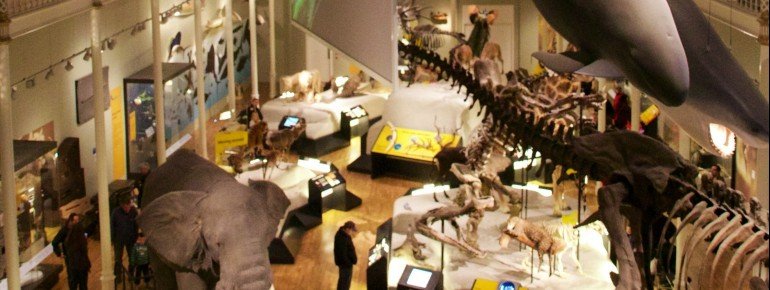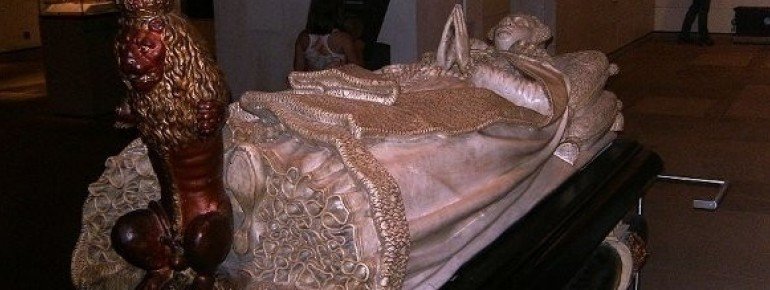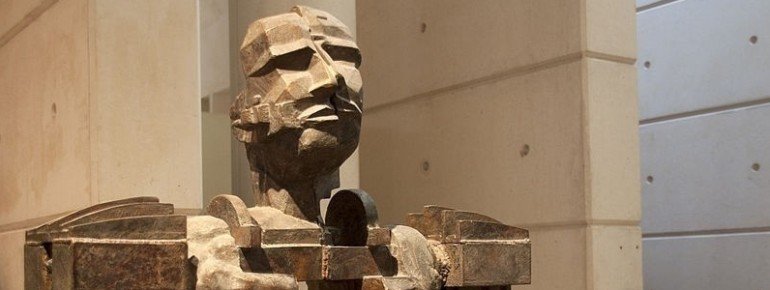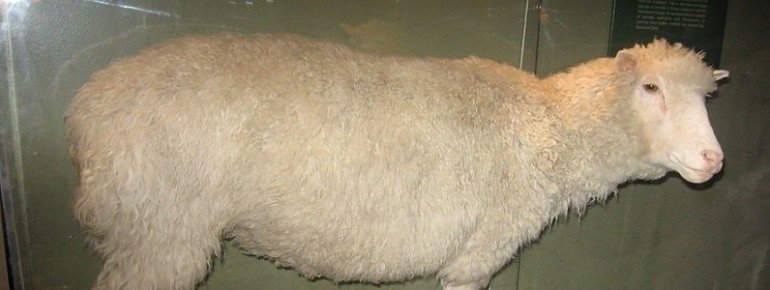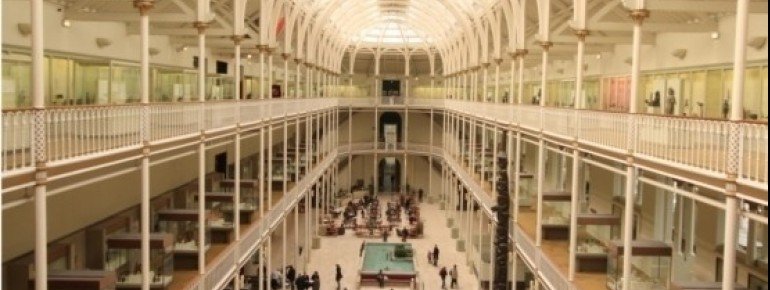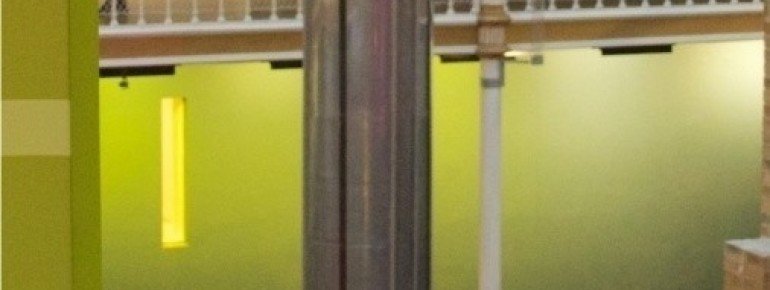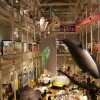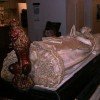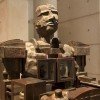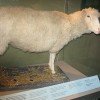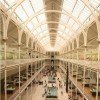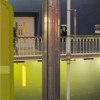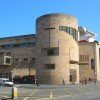Contents
Description
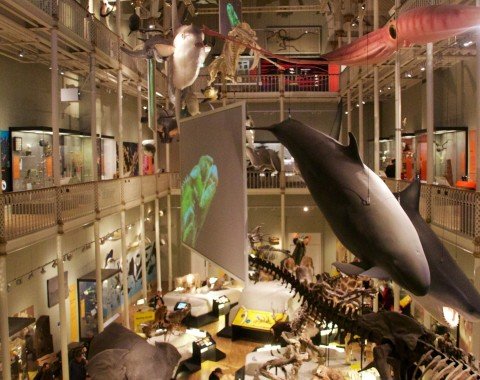
Within the country, the National Museum of Scotland is one of the top 10 most popular attractions in Great Britain and, on international scale, one of the top 20 most visited museums/ galleries worldwide.
Based on the merge of the Royal Museum and the Museum of Scotland back in 1998, the pretty impressive National Museum of Scotland was created. The building complex has seven floors and is subdivided into the sections art, nature, history, technology and world heritage. In addition, there are a number of changing special exhibitions being part of the museum's programme – very much to the like of the visitors. And what is more, the sensational special exhibitions are entirely free of charge!
Explore a huge variety of exhibition samples
The light flooded atrium of the Grand Gallery with all its high columns and windows is one of the nicest places in Scotland and is already a spectacular start to the museum visit. The exhibition “Window on the World” is spread over four floors and is thus the largest individual museum in Great Britain. Celebrating the multitude and variety of the entire museum, there are more than 800 samples taken from a wide range of various cultures, including a wide range from miniature glass sculptures, original Tay bridge girders up to a carved whale bone. The extraordinary Millennium Clock contains a 11.8 ft (3.6 m) tall Southern Pacific wooden bowl and a lighthouse Fresnel lens from the 19th century – a highlight of the Grand Gallery! Each hour, the clock arises with twisting figurines, capturing music and flickering lights.
In the neighbouring section, Discoveries, you find a number of Scots and their ideas/ innovations presented. It doesn't matter whether they were inventors, diplomats, military leaders, adventurers or just VIPs of their time. Fascinating samples depict the stories and achievements of their lives. To what extent Scots have affected the world is depicted by the following objects exhibited in the museum: an Egyptian priest coffin, a huge limestone image taken from the palace of the Assyrian king, the oldest colour TV set there is and a tiny sample of penicillin by Alexander Fleming.
Art from a different perspective
The design and art galleries show a variety of different styles spanning centuries in art, craft, design and fashion. The journey through the centuries begins on first floor covering the topic “art and industry”, dealing with how technological advances have changed the shape and application of everyday objects from 1850 until today. In the chronological round tour, the evolution of mass production and the creation of completely new objects, ranging from radio to computers, is depicted. The little exhibition showing technical and partially bizarre toys, such as the little nuclear power plant, is highly recommendable.
While the world of ancient Egyptians awaits the visitors on third floor, the history of European Styles is told, including all changes and influences in a period counting more than 700 years. The furniture, textiles, glass and porcelain exhibited are evidence of it. A highlight is a white ceramic lion that counts as one of the largest pieces of the famous Meißner porcelain.
A closer look at the fauna
The Natural World Galleries show you the extraordinary multitude of life on Earth. The main concern of the spectacular exhibition Animal World is to show the interaction of around 100 hundred animals with their environment. Here you may explore life of animals from the Arctic to Australia. You learn more about how those animals communicate on third floor at the Animal Senses Gallery or you just walk up two floors higher, entering the section Survival, focusing on survival (hence the name) and extinction of various species. Here you meet the gigantic panda bear Ching Ching or the Scottish wildcat.
If you feel like watching swimming and flying animals, you just need to go to the Wildlife Panorama section. Here you can admire the gigantic Tyrannosaurus Rex skeleton, which fills almost the entire hall. Children will love being here as there is an extra interactive adventure planet provided for them, where they can practise their archaeological skills while digging up a dinosaur skeleton, dive to the sea ground or just crawl through the roots of a gigantic oak tree. And don't forget to explore the universe and geological processes in the exhibitions Earth in Space and Restless Earth. A planetarium with a powerful Schmidt telescope rounds off the range of attractions.
A tour through history
In the Scottish History and Archaeology Galleries you learn about Scottish history from ancient times to modern Scotland based on iconic historical artefacts. Subsequently, you learn about Scottish innovations that have shaped our world and how everyday life in Scotland has changed in the course of history. The first floor presents Scotland in its first 3 billion years, depicting everything there is to know about its origin and evolution of flora and fauna. Next you meet the first humans who settled here between 8000 and 1100 AD and get to see original archaeological treasures. Each exhibited sample is related to a person or a people, which are depicted as abstract figurines.
The exhibition continues up to the year 1707, from the nation of Scotland coming to life up to the merging of the parliaments forming the United Kingdom. In addition, visitors get to see the tiny Monymusk relics, the Queen Mary harp and the famous Lewis chess pieces. Scotland went through a period of change during the entire 18th and early 19th century. Throughout that period it went through a process of transformation, from a mostly rural to an urban and modern society. Experience all of it on third floor. The industrial development of Scotland is shown on the two upper floors. Up here, you shouldn't miss taking a closer look at the mysterious Arthur's Seat puppet coffins. On top floor, underneath the roof, you come to see all changes Scotland has been through depicting five main topics: war, industry, everyday life, emigration and politics.
The adventurous world of technology
The Science and Technology Galleries focus on the history of scientific and technological progress. On fifth floor, you learn more about how scientific developments have revolutionised our life in the course of the past 150 years, covering four topics: a better understanding of the universe, revolutionary progress in construction technology, the success in the communication technology and life saving breakthroughs in the field of medicine.
Impressive objects that can be seen are, for instance, the first air tyre, business computer and bionic arm. The Interactive Gallery is fun to visit for children and adults alike. Design a robot, fly into space, have a seat in a Formula 1 car and eventually meet one of the most famous inhabitants of the museum: the cloned sheep Dolly.
An exciting journey around the globe
Based on numerous advertisements, stories, films, and games in the World Cultures Galleries, you encounter a range of varied landscapes and meet a number of people. This way you come to see the things they have in common and those differentiating them. The exhibition allows you to take a closer glance at various cultures and offers several comparisons that make you think. Third floor is devoted to the South Pacific region. The restored war canoe “Maori Waka” is exhibited here.
The colourful Performance Gallery celebrates the art of various dance types, costumes and music styles of the world. Here you have the chance to play instruments that were exclusively made for this very exhibition. Families may explore the world of the Imagine Gallery, which is especially suitable for children up the age of 8.
Interesting facts
- National Museum of Scotland is among the 5 best rated Tourist Attractions in Great Britain and Northern Ireland.
How to get there
By car
The museum is located right in the heart of Edinburgh's city centre. You start at the roundabout of Edinburgh Airport, which is about 7.5 mi (12 km) away from Edinburgh Castle. Follow Eastfield Road passing the roundabout until you end up in Glasgow Road. Keep to the left. Follow the road for about 5 mi (8 km) and then take a right turn into Torphichen Street. Keep right when Torphichen Road turns to Dewar Street (B700). Turn left to make sure you stay on the B700, which then changes to Bread Street. Shortly after, you turn left to get to W Port, leading straight to Grassmarket. As soon as you pass Edinburgh Castle, you turn right into George IV bridge and after 330 yd (300 m) you will already discover the museum being located on your left-hand side.
There are only car parks for people with impairments provided. You might want to leave your car at Johnston Terrace or at “Castle Terrace”, the restaurant of Edinburgh Castle. These are the two places you may store your car at and that are in the closest proximity to the National Museum of Scotland. Mind that car parks are confined here. Throughout the old town of Edinburgh, though, you'll find fee-based car parks.
By public transport
By train
Waverley station, the central station of Edinburgh, is located at the east end of Princes Street. Walk along the main street N. Bridge/ Nicolson Street for 750 m until you get to the junction with the jazz bar. Turn left into Chambers Street. The National Museum of Scotland appears on your left-hand side.
By bus
The fastest and most comfortable way to get from Edinburgh Airport to the city centre is by Airlink100, the city's express bus service. The ride takes about 25 minutes and ends at Waverley Bridge, just where the central station is. From here you can comfortably walk to the museum.

